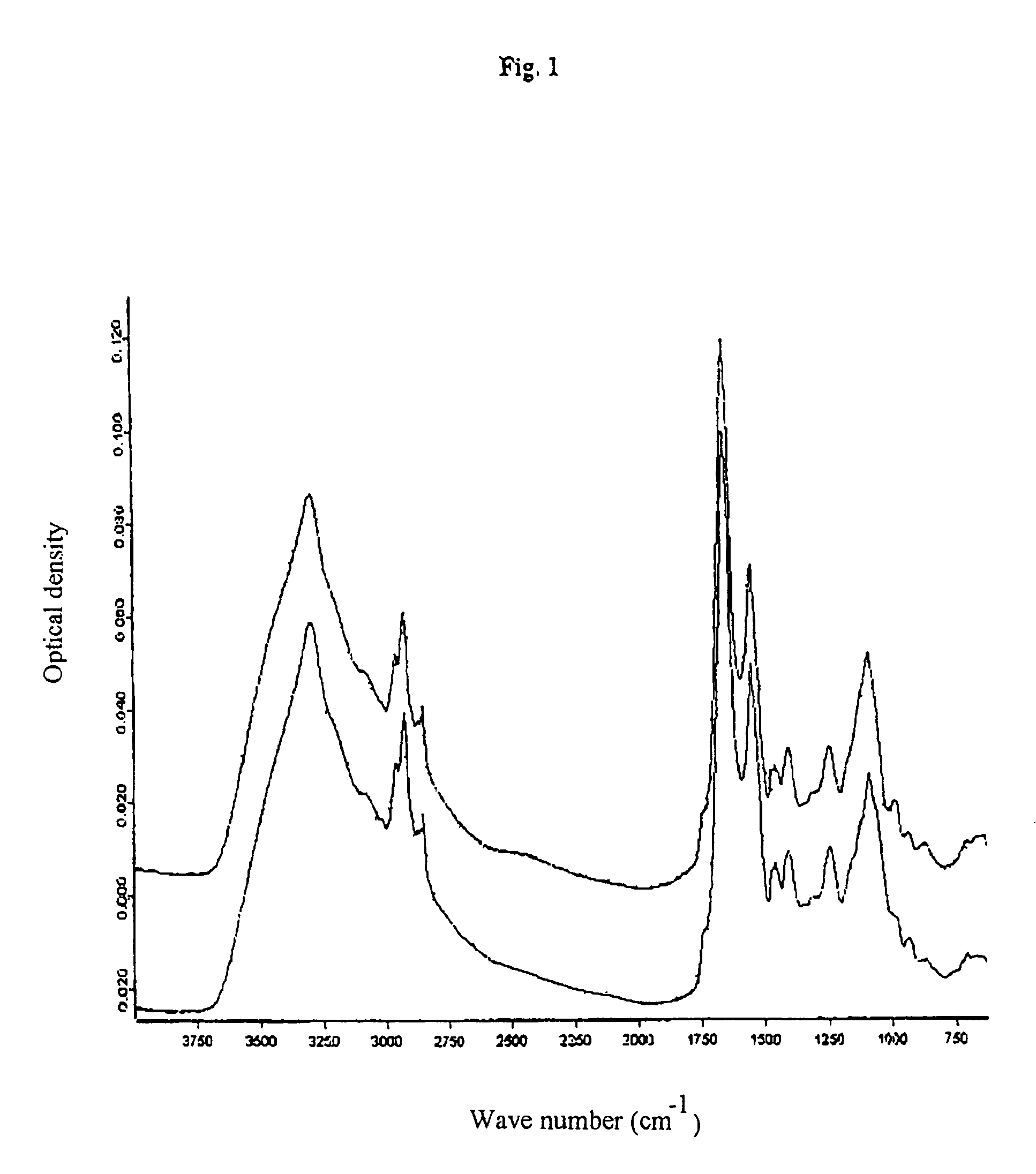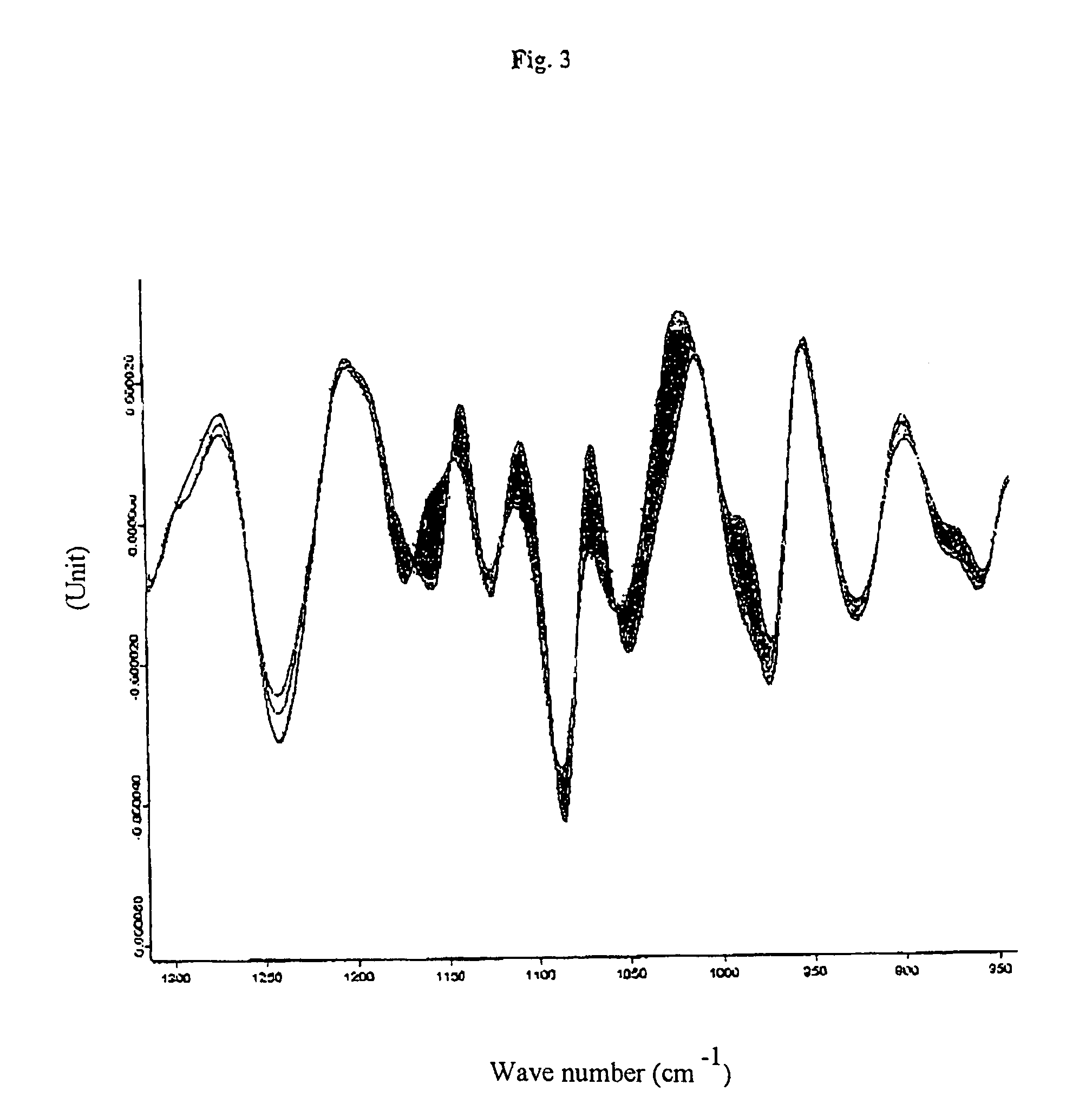Method and an apparatus for determining well or fully differentiated mammal cells
a mammal cell and apparatus technology, applied in the direction of chemical methods analysis, biochemistry apparatus and processes, material testing goods, etc., can solve the problems of complex apparatuses, time-consuming determinations, and undesirable contamination of fibroblasts
- Summary
- Abstract
- Description
- Claims
- Application Information
AI Technical Summary
Benefits of technology
Problems solved by technology
Method used
Image
Examples
example 1
[0046]An infrared measuring apparatus of the HTS-XT brand made by Bruker Optik GmbH, Germany, was used to carry out the method of the invention. This is an IR measuring apparatus for a standardised micro-titre plate format which already contains software for the measurement, evaluation—i.e. the Fourier transformation—and documentation as well as derivation of the absorption spectra recorded. Micro-titre plates of silicon permitting both transmission and reflection of the light were used for the measurements. The measurements were carried out with the following parameters: tensor 27; resolution 4 cm−1; measurement time: 53 sec. per sample (64 scans).
[0047]3 to 4 μl of the cell suspension were coated onto the individual measuring points of the micro-titre plate; three parallel determinations were carried out for each sample.
[0048]The samples were frozen and subsequently thawed cell pellets of chondrocytes in PBS with and without 5 or 10 wt.-% of human serum albumin. These cell pellets...
example 2
[0050]Using the dendrogrammes and spectra obtained in example 1 as reference spectra, blind samples subjected to the identical process were then examined. As shown in FIG. 5, it was possible to clearly allocate them to their pertinent cell type, namely chondrocytes, melanocytes and periosteal cells.
example 3
[0051]In accordance with example 1, chondrocyte samples with 10% of human serum albumin and 5% of human serum albumin, without serum albumin as well as ex vivo samples, namely chondrocyte suspensions just prepared, i.e. without interim freezing, were examined.
[0052]The corresponding dendrogramme is shown in FIG. 6. This dendrogramme shows that the method of the invention is also suitable for determining the status of the chondrocytes and their immediate solution environment.
[0053]Therefore, the invention provides a both simple and fast method for the determination, especially typification, of well or fully differentiated mammal cells which, for example, is suitable for routinely checking cell preparations used in transplantation medicine. One of the main reasons for that is that rapid, inexpensive typification is possible with minimum sample amounts.
PUM
| Property | Measurement | Unit |
|---|---|---|
| wavelength | aaaaa | aaaaa |
| wavelength | aaaaa | aaaaa |
| time | aaaaa | aaaaa |
Abstract
Description
Claims
Application Information
 Login to View More
Login to View More - R&D
- Intellectual Property
- Life Sciences
- Materials
- Tech Scout
- Unparalleled Data Quality
- Higher Quality Content
- 60% Fewer Hallucinations
Browse by: Latest US Patents, China's latest patents, Technical Efficacy Thesaurus, Application Domain, Technology Topic, Popular Technical Reports.
© 2025 PatSnap. All rights reserved.Legal|Privacy policy|Modern Slavery Act Transparency Statement|Sitemap|About US| Contact US: help@patsnap.com



